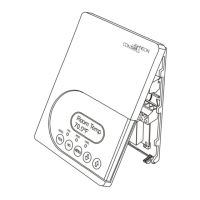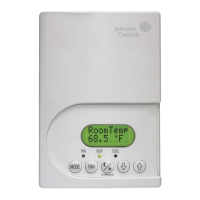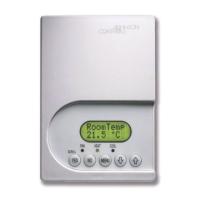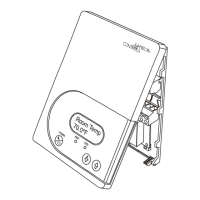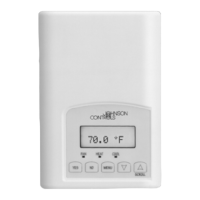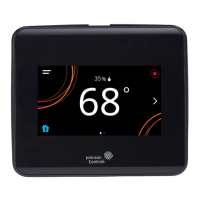Preliminary—This information may change.
18 TEC2103-2 Networked Multi-Stage Thermostat Installation Instructions
Technical Specifications
Thermostat with N2 Bus, Multi-stage
20-30 VAC, 50/60 Hz, 24 VAC nominal, 2 VA (RC and C) Class 2 or Safety Extra Low
Voltage (SELV)
Relay Contact Rating
1 ampere with in-rush surges up to 3 amperes, 30 VAC maximum, Class 2
Relay dry contact only across the C terminal to DI1 or DI2
18 gauge maximum, 22 gauge recommended
Thermostat Measurement
Range
-40 to 122°F (-40 to 50°C)
Resolution:
Control Accuracy
Local 10 K ohm NTC thermistor
±0.2 F° (±0.1 C°)
±
°
±
°
°
°
Temperature Indication
-40 to 122°F (-40 to 50°C)
Cooling: 54 to 100°F (12 to 37.5°C) in 1/2 degree increments
Heating: 40 to 90°F (4.5 to 32°C) in 1/2 degree increments
Minimum Deadband
(Between heating and cooling) 2 F
°
°
Conditions
32 to 122°F (0 to 50°C); 0 to 95% RH noncondensing
Ambient Storage
-22 to 122°F (-30 to 50°C); 0% to 95% RH noncondensing
4.94 x 3.38 x 1.13 in. (125 x 86 x 29 mm)
File E27734 with CCN’s XAPX (US, UL 873) and XAPX7 (Canada, CSA C22.2 No. 24)
This equipment has been tested and found to comply with the limits for a Class A digital
device and verified to Class B pursuant to Part 15 of FCC Rules. These limits are designed
to provide reasonable protection against harmful interference when this equipment is
operated in a commercial environment. This equipment generates, uses, and can radiate
radio frequency energy and, if not installed and used in accordance with the instruction
manual, may cause harmful interference to radio communications. Operation of this
equipment in a residential area is likely to cause harmful interference, in which case the
user will be required to correct the interference at his/her own expense.
Industry Canada
This Class A digital apparatus meets all of the requirements of the Canadian
Interference-Causing Equipment Regulations.
Cet appareil numérique de la Classe A
respecte toutes les exigences du Règlement sur le materiél brouilleur du Canada.
The performance specifications are nominal and conform to acceptable industry standards. For application at conditions beyond these
specifications, consult the local Johnson Controls office. Johnson Controls, Inc. shall not be liable for damages resulting from misapplication or
misuse of its products.
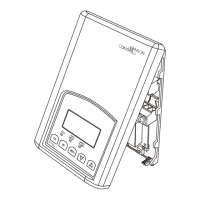
